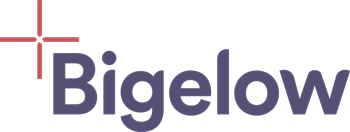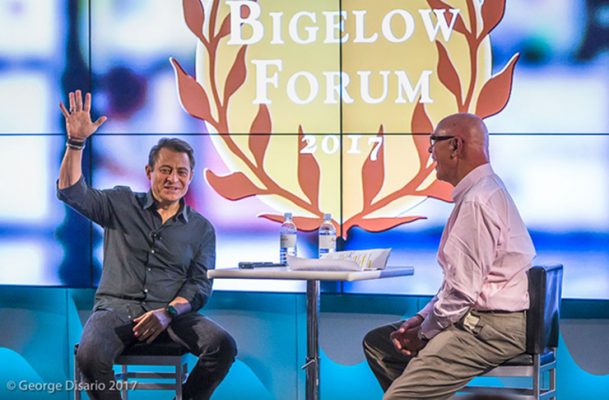How fast do you learn? Perhaps a more fitting question is: how fast do you un-learn?
Why does it matter?
Every single person reading these words was trained in, and trained for, an environment that no longer exists. We thought we were participants in an Industrial Age bureaucratic system and we trained to win that game. Then, every once in a while, an entrepreneur wandered in and lit a little candle into the darkness. Now, we have moved from that candle to a 10,000-watt brilliant white light.
As a recent participant at the Tenth Annual 2017 Bigelow Forum, I thought aloud with other participants co-creating 4 themes or literacies that emerged over the past ten years of the Forum. Their feedback was that participants felt it useful, and so I share it here with you now:
Age of the Entrepreneur. Back in 1982-83, Dan Bricklin was hanging in Steve Watson’s ComputerLand store on Rte 9 in Wellesley playing around on an IBM PC muttering under his breath about “rows and columns.” Who could have guessed that would become VisiCalc? Who knew that would represent a crack in the bureaucratic world? I am not saying that VisiCalc, Excel, or any spreadsheet—is the best thing that ever happened to EOMs—possibly just the opposite. (No surprise that when you dumb things down to a cell and try to get a numerical answer to a really dynamic question, you tend to have really bad outcomes). But without a doubt, it signified the beginning of the Age of the Entrepreneur where small firms powered by technology tools now compete successfully with the largest firms in the world. The ubiquity of technology leveled the playing field. Suddenly, 12 people with technology could more successfully compete with old legacy 1,000-person firms whose creaking legacy has begun to feel more like a liability than an asset. 15 years later, web browsers beginning with Netscape facilitated global connectivity. Now we are on the cusp of explosive free global connectivity of everything—way, way beyond anything we think of today. Bigelow Forum participants are industry disruptors, game changers; all of whom have benefited from the field leveling.
Coordination Economy. Who was it (Bill Joy, I think), who hilariously observed “no matter who you are, statistically, it has to be true that most of the smartest people on the planet work for someone else.” In part, that’s the reason we created the startup of The Forum ten years ago. Sure, we deploy our teams—but more importantly—our teams are complemented by your teams, our EOM client teams, and teams of advisors who are expert in other domains. We are all witnessing giant steps toward distributed everything, and we leverage these difficult-to-lead teams through constant communication, using familiar memes and vocabulary, collaborating together.
The Rise of Psychology and Neuroscience in Decision Making. Each of us is two selves and they don’t usually agree, right? Principal-Agent Theory. Rational vs. Emotional. System 1 vs. System 2. Prefrontal cortex vs. amygdala. How we pathetically “mis-want.” An increasing understanding of Cognitive Biases and how we are challenged to make decisions that ultimately move us closer to our ideal. So we were biologically evolved to be hunter-gatherers and instead, we find ourselves texting in traffic jams. The increased recognition of our biases leads to better decisions. And as EOMs swirl down the river of opportunities on their adventure, they can learn the techniques of making better decisions, so increasing their probability of reaching their personal and professional goals.

Superabundance of Capital. If you are a student of history, you know it has long been accepted that labor was plentiful and capital was scarce. Today however, that’s all upside down. We don’t merely have an abundance of capital, we have a Superabundance. Now, it is skilled talent that is scarce. Interest rates have stayed zero for longer than anyone of us would have predicted. Public capital markets are at all-time highs in the history of the world. Venture firms are stuffed with cash and are bidding in auction-like formats to make investments. Private equity, which did not exist 40 years ago, has commoditized itself faster than any industry I have seen or even heard of—and is awash with cash.

As a consequence of these four themes, today, it’s what our EOM friends and clients have—a superior performing private company disrupting its niche—that is what is unique and valuable. What investors supply is now a commodity and able to be rented at basically the same price from every one of them.
And do we believe the changes are over? Since capital has become a commodity, how long do you think it’s going to be before you rent it from Amazon, Google, or Microsoft? I mean, we already rent our research, our data storage, our (metaphorical or actual) shelf space from them, don’t we? Most of our businesses are in some way built on top of their platforms. We already let them see every key stroke of our search, every product we buy, every product we don’t buy but just pause on, every piece of data we store.
Master’s in Mistakes. I know that many Bigelow Forum participants and many readers here have earned advanced academic degrees. One degree I’ve earned that you may not know about is my Master’s Degree in Mistakes. Yep, it’s true. All seasoned, successful EOMs have. Because doing what we do requires us to bet against the consensus, and when you do that a lot, you are bound to be wrong a lot. You push the envelope, sometimes you fail, and it hurts. But being wrong, or failing, gives you a really loud signal to motivate your own behavioral change, right? Let’s think about this: successes keep you doing more of the same, so you learn to repeat, and don’t grow and change. But mistakes or failures signal you to change what you are doing, to get out of your comfort zone—failures are where all the learning and growth comes from. And GRIT figures into that alchemy, right?
We all have experiences that taught us bringing about change in failure, or in crisis, is relatively easy. It’s bringing about change in successful organizations or successful people that is hard. We conflate talent with our luck. We cherish what got us here. But will what got us here take us there? It takes huge amounts of courage to unlock the door of your comfort zone and step outside it.
Driven by the Past or Called to the Future? Let me ask you to look in the mirror. There are two ways to bring about change in life, right? One is that you can walk away from something. The other is that you can walk towards something new. Are you driven by the past or called to the future?

Thinking Prospectively. Thinking persons acknowledge the future is not predictable, simply because it is not knowable. Any complex, self-adapting, non-linear system is not able to be predicted. No one can predict the future whether it’s the weather, hurricane tracks, the stock market, or Presidential elections. Not possible. (Back testing NOAA forecasts for example show they are wrong more than 70% of the time; back testing election results…aww forget it). As principals with skin in the game, we are required to think about the future resource allocation though. What we can do is construct mental models of the future and ask ourselves “what if?” Making simple mental models around the future and modeling possible outcomes is what Marty Seligman calls prospection—a fundamental human life characteristic. We are not going to get certainty, but we may achieve some clarity on the distribution of possibilities.
There is no person in the world better to think with us through some models of the future than my friend Peter Diamandis. He has created the thought leadership in the area of exponential technologies and the convergence of exponential technologies.
Peter and I sat down for a brief 30-minute one-on-one interview where I questioned him about some of what inspires him, what calls him to the future, his level of Grit, what he’s excited about, what he’s agitated about. You can see he got animated talking with me from the picture below. You can listen to our unedited audio interview here:
Of Note: References and Further Reading:
Berger, Warren. (2016). A More Beautiful Question. New York: Bloomsbury.
Brand, Stewart. (1999). The Clock of the Long Now: Time and Responsibility. New York: Perseus Publishing.
Diamandis, Peter. (2015). Bold: How to Go Big, Create Wealth, and Impact the World. New York: Simon & Schuster.
Dalio, Ray. (2017). Principles: Life and Work. New York: Simon & Schuster.
Durant, Will & Ariel. (1934). The Lessons of History. New York: Simon & Schuster.
Eagleman, David. (2012). Incognito: The Secret Lives of the Brain. New York: Vintage Books.
Grant, Adam. (2016). Originals: How Non-Conformists Move the World. New York: Penguin Random House.
Hirschman, Albert O. (1970). Exit, Voice, Loyalty. President and Fellows of Harvard College.
Johansen, Bob. (2017). The New Leadership Literacies. Oakland, CA: Barrett-Koehler Publishing.
Milner, Marion. (1934). A Life of One’s Own. New York: Routledge.
Pressfield, Steven. (2011). The War of Art. New York: Black Irish.
Rose, Todd. (2016). The End of Average: How We Succeed in a World That Values Sameness. New York: Harper One.
Russell, Bertrand. (1957). The Conquest of Happiness. New York: Liveright Publishing Corporation.
Sacks, Oliver. (2017). The River of Consciousness. New York: Knopf.
© 2024 Bigelow LLC. All rights reserved.

